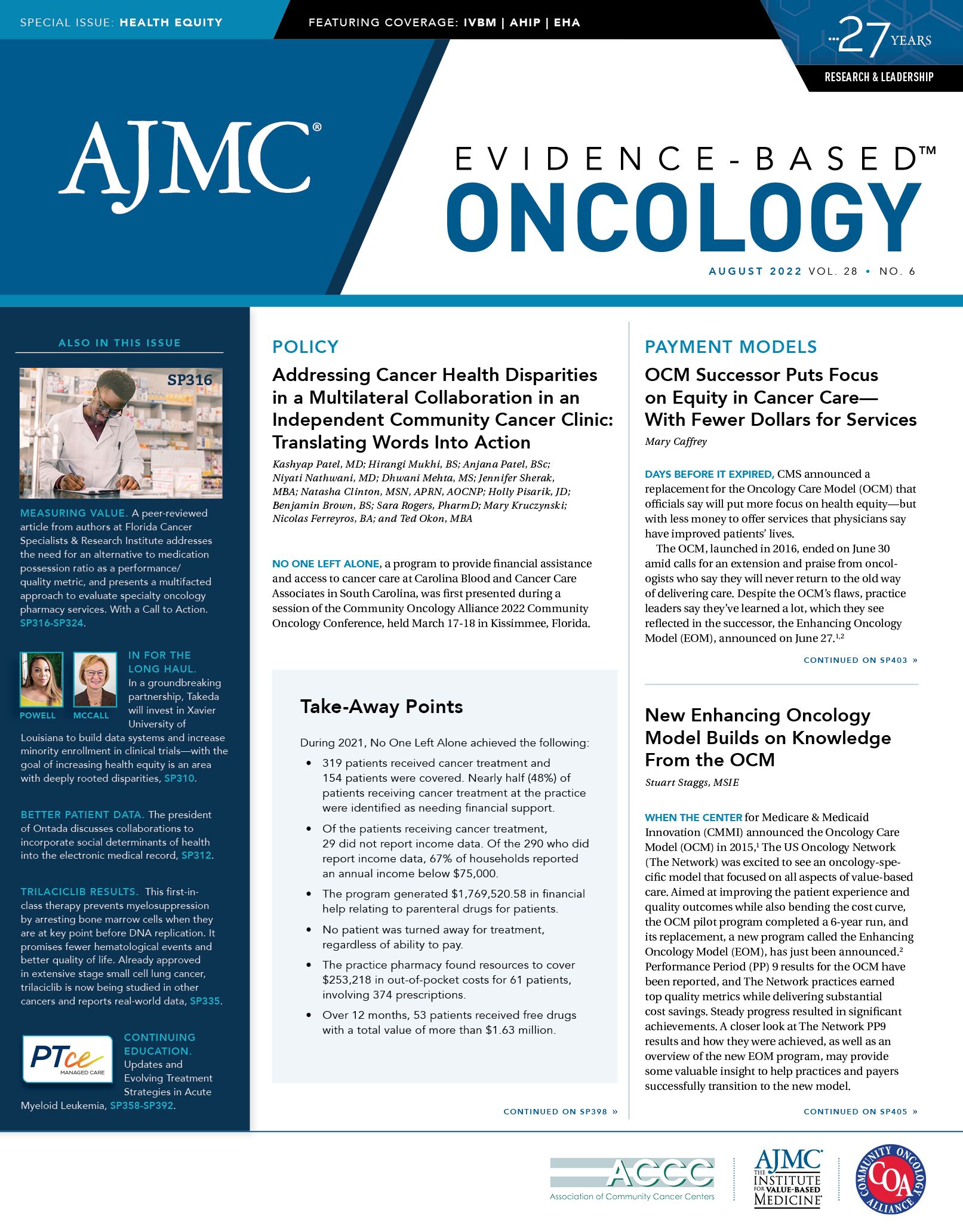- Center on Health Equity & Access
- Clinical
- Health Care Cost
- Health Care Delivery
- Insurance
- Policy
- Technology
- Value-Based Care
How Advocacy Groups and Patient Data Can Help Drive Health Equity
How can better use of patient data improve health equity? Adam Mariano, Esq., MSPH, senior director, Product and Strategy, Integrated Health Practice at IQVIA, discusses with Evidence-Based Oncology TM (EBO) how the changing landscape in data ownership could allow greater use of data from groups who have historically been poorly represented in clinical trials. Changes brought on by the 21st Century Cures Act1 and the Patient Access Rule2 create an important role for patient organizations, Mariano said.
EBO: What is the role of patient organizations in obtaining data?
Mariano: The change in data ownership in the United States being driven by the Cures Act and the Patient Access Rule offers patient organizations a real opportunity to educate patients about their access rights, to offer context to raw health data, and to create clear pathways for patients to leverage these data in their care. Plain-language explanations for electronic medical record data elements, services, and advocacy support and coaching on data access and acquisition are all critical.
EBO: How can patient organizations play a role in collecting data from populations underrepresented in clinical trials?
Mariano: Patient organizations can act as advocates for underserved and historically excluded populations by starting with education and access support, including educating patients as to their rights, the scope of data available to them, and how to secure this data access. Additionally, they have opportunities to establish creative and innovative new interactions for these data once secured, as well as driving partnerships with other health organizations to assist patients in applying these data to everyday health transactions while also helping them to protect their privacy and stay informed in an increasingly crowded space.
EBO: How does interoperability improve the ability to combine data from different sources to obtain meaningful insights?
Mariano: By reducing the level of effort, complexity, high cost, and long processing times, true interoperability—and the ubiquity of standards such as Health Level Seven Fast Healthcare Interoperability Resources—allow faster paths to integration and insight. Standards-based integration, clear coding/mapping expectations, common identifiers, and clear minimum expected data source scope, including those promoted by United States Core Data for Interoperability and others, allow for predictable process and data sources, increased ability to favor automation instead of human curation, and concentration on data enrichment instead of quality management.
EBO: How will patients benefit from increased data sharing?
Mariano: Patients will always benefit from data transparency. Improved care portability, usable and consumer-friendly price transparency, easy pathways to patient education, and reduction in barriers to care are all benefits of increased data sharing for patients. All of this leads to greater agency for patients and improvements in patient-centered care.
EBO: Can you discuss the potential of convening data in oncology to improve health equity?
Mariano: When data convening focuses on yielding representative sets of data, especially those that represent underserved and historically excluded populations, the possibility for equitable treatment and cures rises. This in turn accelerates access to innovative treatments and care in these populations, and it short-circuits the delays that have been imposed by nonrepresentational drug and treatment development. Those historical delays have led to requirements for additional safety and other data collection before these at-risk populations have insight to treatment data and differentiated outcomes. This slows delivery of critical oncology assets to high-risk populations. Data convening done right is a critical tool in helping to drive equitable care.
EBO: Would you like to add anything else?
Mariano: Where we stand today—at the intersection of cancer research, adoption of real-world data to drive advancements, and patient-centric care—presents an opportunity for patient advocacy organizations to act as a trusted data steward for all patients. In this role, patient advocacy organizations can support patients in managing their own care, aggregate multiple data sources to drive oncology research, and help put the patient voice at the center of study design and delivery, ensuring that these resources are accessible to all patients.
References
1. 21st Century Cures Act. HR 34, 114th Congress (2016). Accessed July 11, 2022. https://www.gpo.gov/fdsys/pkg/BILLS-114hr34enr/pdf/BILLS-114hr34enr.pdf
2. Interoperability and patient access fact sheet. News release. CMS; March 9, 2020. Accessed July 11, 2022. https://www.cms.gov/newsroom/fact-sheets/interoperability-and-patient-access-fact-sheet

